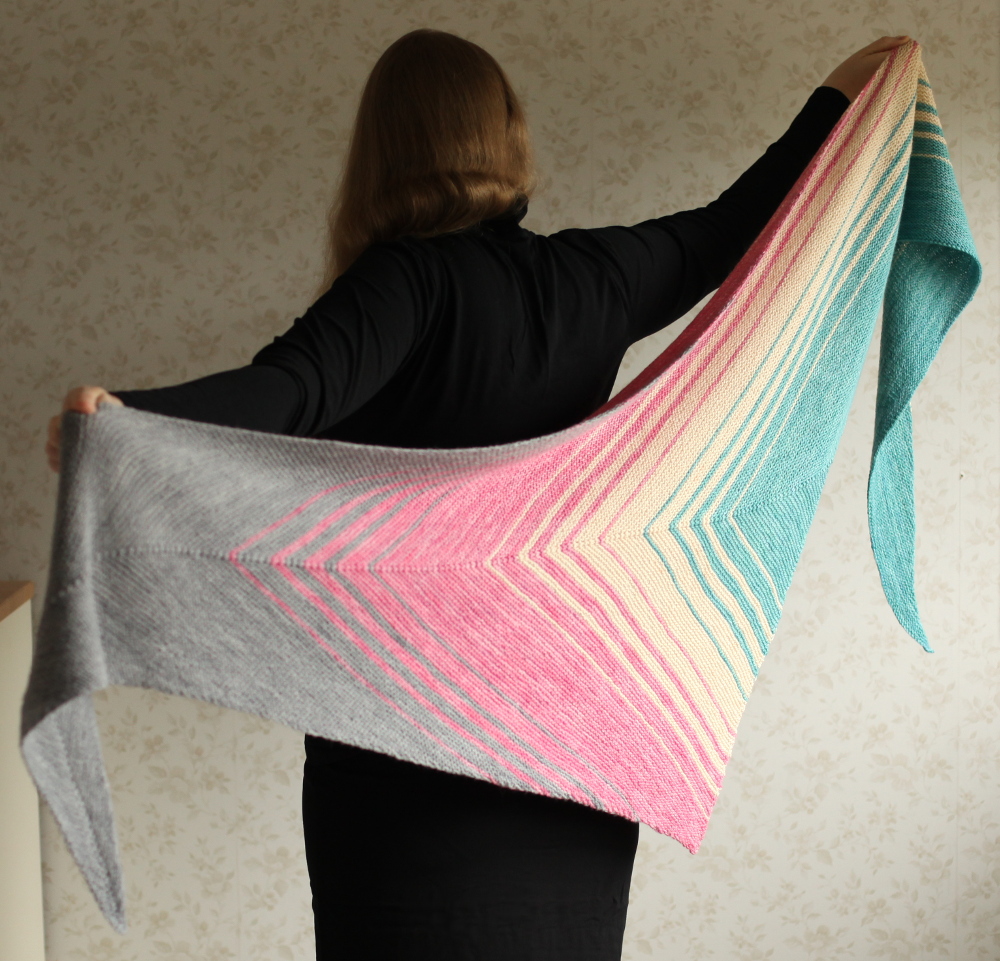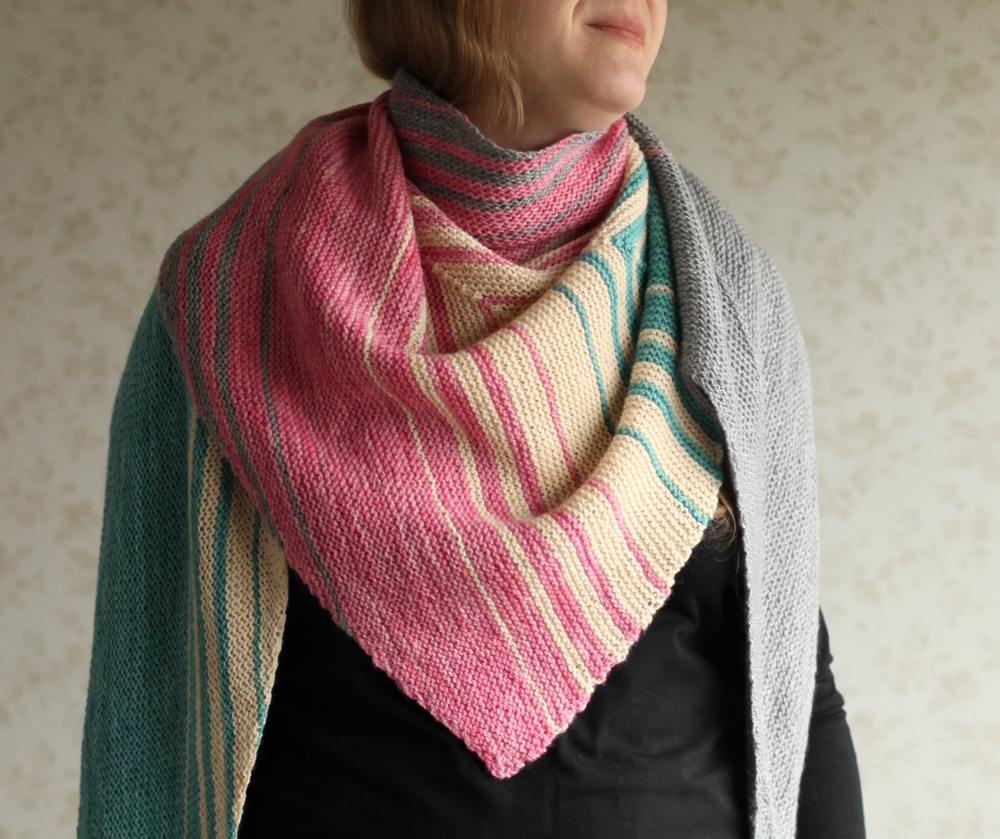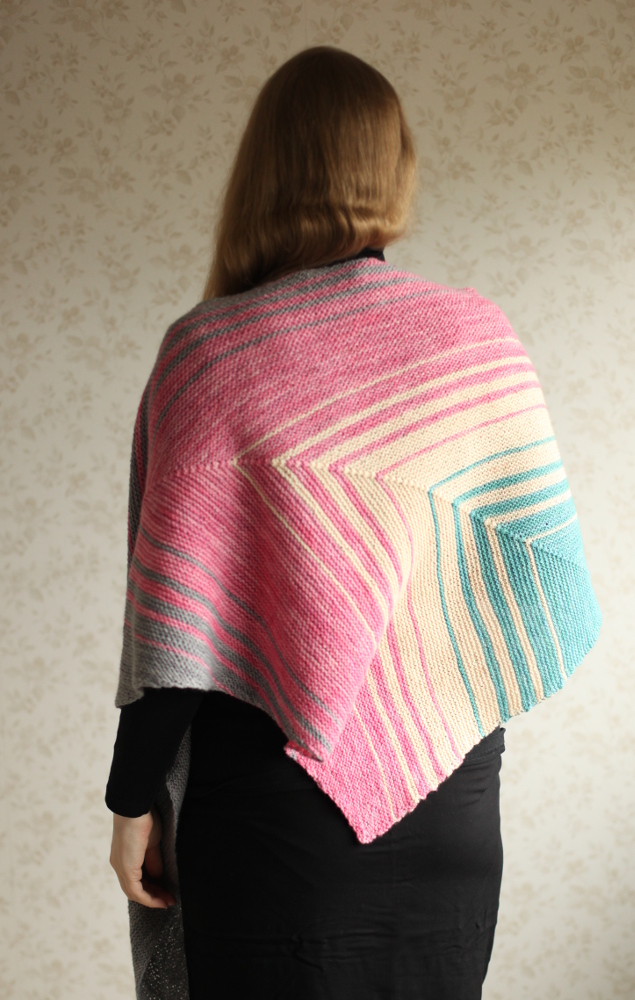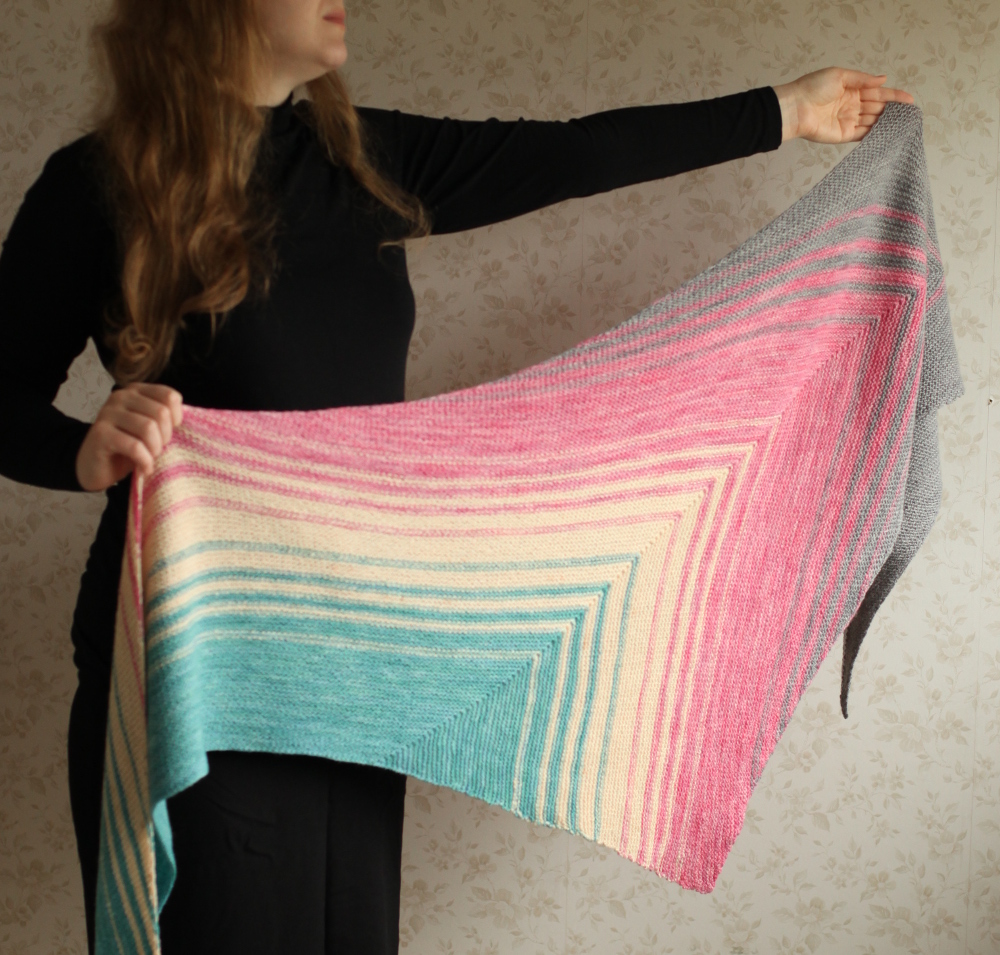Last year I bought some beautiful semisolid yarn, made of Polwarth wool and silk. Four of the colorways looked really good together. I wanted to emphasize each color, preferably with smooth transition between colors. In some of my previous work, I had been playing with stripes of different width. In Valentino, Indian Summer and Sumu there is a transition from one color to another. I was after such an effect with this project, too.

After playing with stripes for a moment, I found the sequence I wanted to use. It looked very much like some sort of wave proceeding in the air – or another fluid. I was very happy with the effect.
Sound waves are longitudinal waves. The air pressure changes when the wave advances. Since air is transparent and the pressure doesn’t change its color, you can’t see the sound waves. This shawl is what I imagine the sound waves to look like. Of course the actual wave is not made of separate stretches of pressures, but instead it’s continuous, the pressure fluctuating.

There seemed to be plenty of shawl patterns with the name referring to the sound waves or echo. I wasn’t sure what to call mine, until at some relaxed moment I begun to explore a certain syllable, which letters to put after it, and there it was: vaski. Vaski is a Finnish word meaning a brass instrument. The word alone wasn’t a good name for a shawl, in my opinion, so I explored the words to go with it. It should be short to be easily memorized. Imagine a long word in a foreign language – you’re not going to spell that correctly later on! Since the shawl pattern was inspired by waves, it made sense to me to use the word that refers to playing an instrument. That’s why the pattern became Vaski soi.

When choosing colors for your Vaski soi shawl, there are a couple of things to consider. First, if you wear the shawl wrapped around your neck so that the center is in the front, the color that will show the most is color B. So that’s in a way your main color. At the same time, color C will be some sort of an accent color. I would place the color that best suits your skin tone as color B.

Another thing you might want to consider is that you will have a reasonable amount of leftovers of color C, but not that much of the others. That’s why the color C of the model shawl is white: I wanted to save some of it to be knitted together with another colorway of that same yarn.
Vaski soi pattern is now available in my Ravelry store.